Part of my everyday carry gear is a notebook and a pen or pencil.
Here is why these are important, and why you should have a notebook and writing implement in your survival gear.
by Leon Pantenburg
For decades, I carried a pencil or pen and small pocket notebook as part of my everyday carry gear.
As a working journalist, these are tools of the trade, and this was a no-brainer. Part of my job was gathering information and interviewing sources. I always have a larger notebook in my briefcase or car and a pen and pencil.
But the small, pocket-sized notebook that fits in my hip pocket gets used way beyond what you’d imagine. In my urban lifestyle, that’s the notebook I use constantly to write messages, grocery lists, notes to put under windshield wiper blades, and reminders of things to do.
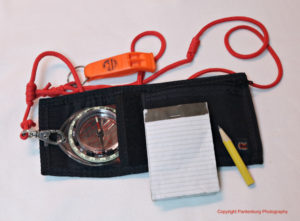
A notebook and pencil always go along with my compass setup.
But the most important aspect is convenience. If the notebook is easy to carry, you won’t leave it behind.
You might want to invest in a quality tactical pen and notebook with waterproof paper as some foresters or emergency personnel use. (Rite in the Rain makes a great notebook for outdoors people.) But whatever size you carry in the backcountry, make sure your notebook is carried in a plastic bag, or something that keeps it dry in the rain or after a dunking in a creek. (I glue a piece of Naugahyde and make a sturdy cover for my MeadWestvaco vinyl memo books. The Naugahyde keeps me from sweating through the notebook on hot days, and is more durable than the standard cover.)
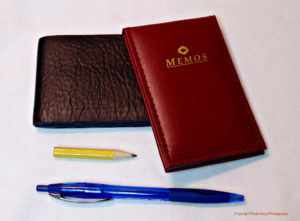
The MeadWestvaco vinyl memo book is a perfect size to carry in a pocket.
And don’t argue for electronic gee-wizardry, please. Anything powered by batteries is as reliable as the power source. Cold weather can kill batteries in your whatever-phone, leaving you with a paperweight.
In a survival kit, your notebook can be more important than you could imagine. Here are some uses:
Write a treatment note: Suppose you have to administer first aid to someone, and the victim must be passed on to a Search And Rescue or Emergency Medical Technician. Medical personnel will really appreciate a brief note, documenting what treatment you have already done. Use the five Ws: Who, What, Where, Why and When to explain what treatment was given and any observations. An effective note can save precious time.
Leave a note in your car: Always leave a note with someone, again elaborating on the five Ws, when you take off on an adventure. This note should be left at home with a responsible adult. At the trailhead, if there are any changes in plan, a note should be left on the dashboard, or under the windshield wiper, where it can be easily read. This can save Search and Rescue teams countless hours of searching if you don’t return as planned.
Directions you took: If you get in a complicated or confusing area, write notes to yourself about which turns you took and what landmarks were noticed. Later, if you’re returning in the dark or the weather gets bad, you don’t have to wonder which way to go. If you are stressed or under duress of some sort, there is a propensity to forget directions. A clear note will help.
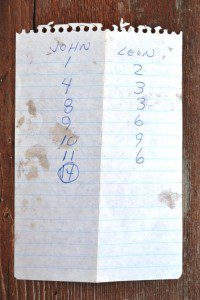
The 40-year-old note shows my canoeing partner, John Nerness, finished next to last, while I took second place in this Pitch game.
Notes on the trail conditions: It is helpful to record trail conditions in some cases, so on the return trip you don’t forget about an icy spot or a hazard on the trail.
Trace a map: On one snowshoe trip, I noticed a new trail on the kiosk of a warming hut. It was easy to trace the route on a piece of paper, along with GPS coordinates.
Photo specifics: As a photographer, I’m always interested in what works under challenging situations. If you’re tackling a particularly tricky shot, write down what you did so you don’t have to reinvent the wheel the next time. It’s also nice to record GPS coordinates of a particularly nice area or landscape.
Tic Tac Toe: Or other games. A danger in the wilderness is getting bored while waiting to be rescued or for the weather to clear. I take along a deck of cards, and a note book allows keeping score. Anything that keeps your mind occupied in an emergency or disaster situation is a survival tool.
Make a plan: Every survival situation should have a plan of action for getting you out of it. Write down your plans and how you intend to implement them. That way, under stress, you won’t forget to do something important.
Drawing or sketching: I didn’t include this in my list, because I can’t even draw stick figures very well. But my friend John Rusky, of Quapaw Canoe Company, does magnificent paintings and water colors of the Mississippi River. Sometimes an artist will do a hasty sketch that later develops into an art piece
That’s eight uses for a notebook, and there are a lot more if you use your imagination.
Please click here to check out and subscribe to the SurvivalCommonSense.com YouTube channel – thanks!

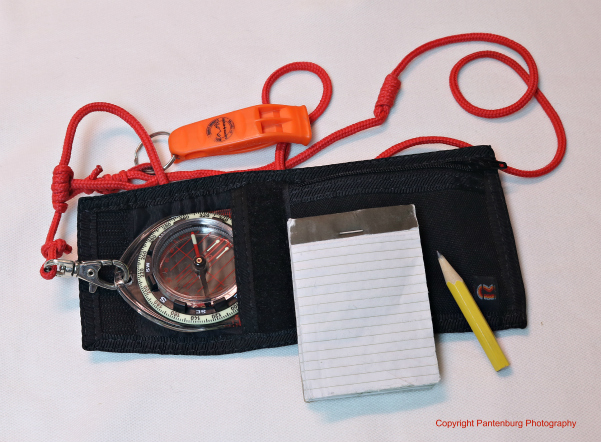
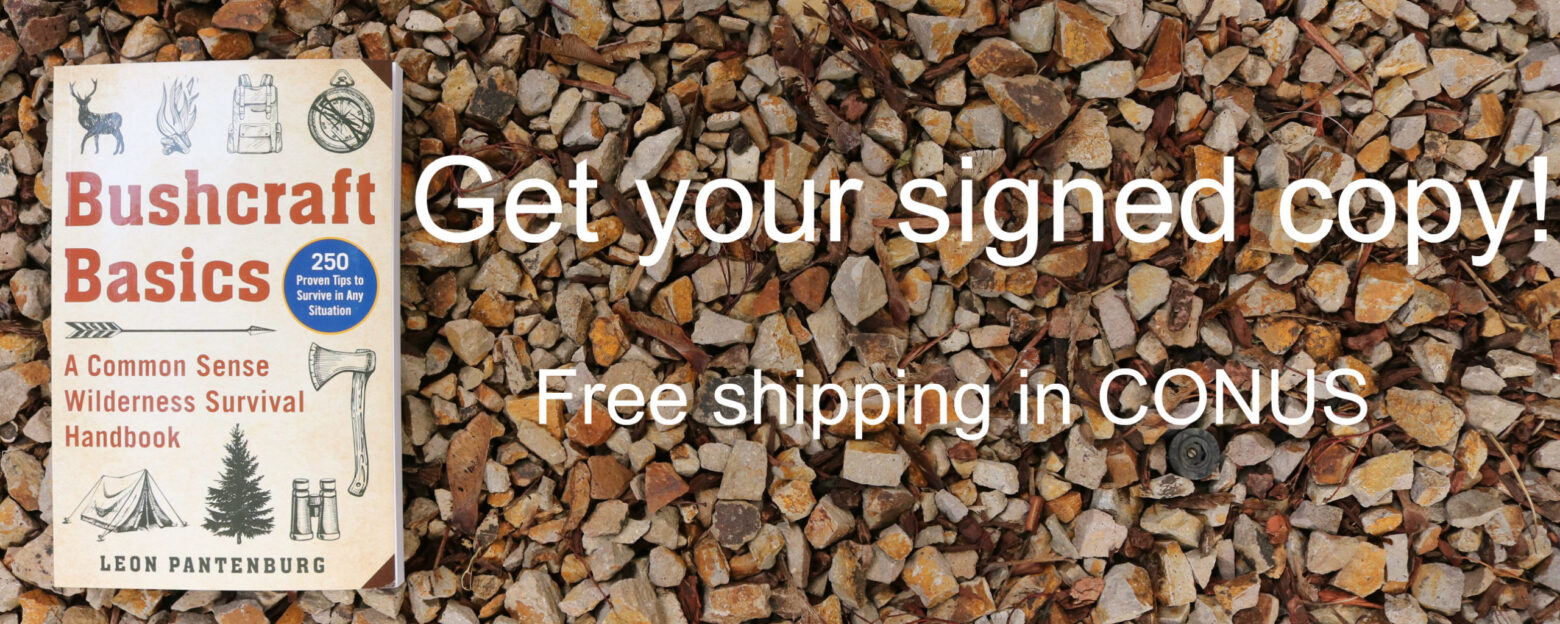
Leave a Reply